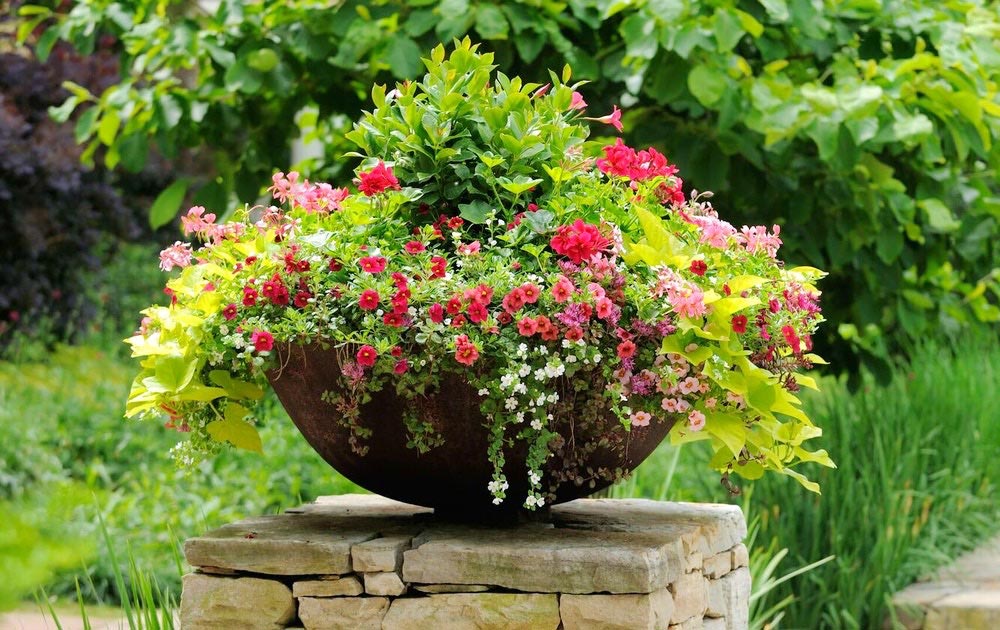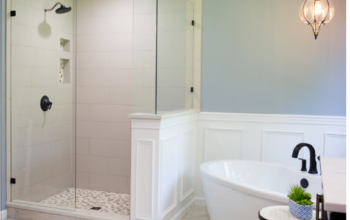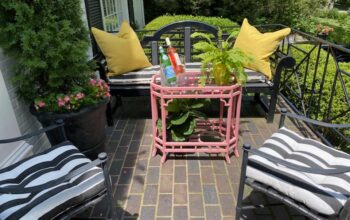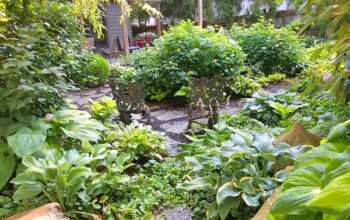Local experts give advice for adding a container garden to your outdoor space
Are you looking to add some color and interest to your patio or porch? This deceptively easy task can go very wrong if you don’t take several factors into consideration. Luckily, local experts have some tips for getting the most out of a container garden so you can enjoy it all summer long.
Plan Your Spot

As they say in real estate, think location, location, location. When considering adding a pot to an outdoor space, Lisa Helm, founder of Dayton Urban Grown, says, “Is the place you’re thinking of putting this container garden in the sun or the shade? Look in the morning and then again after 4 p.m. to determine this. Another consideration is wind. Wind dries plants out quickly. Air moves differently in the open or through sheltered space. What about water? Is the spot close to a water source? Will rain reach the container?”
Pick Your Pot
Size matters, but so does weight. Keep that in mind when making your selections. There’s also lots of choices in material—wood, ceramics, resin and metal are all options. And don’t forget about style. Cottage, formal English, modern and arts and crafts styles are all available. And don’t worry, blending or contrasting with your architecture are both valid options.
Purchase Your Plants

Erin Fadden, greenhouse leader and designer at Berns Garden Center (https://bernsgardencenter.com/) uses a tried and true concept when designing a container garden: “The most appealing containers use an odd number of plants. About five plants for a 12-inch pot. Choose a thriller, two fillers and two spiller plants for a lush mix.”
According to Fadden, a thriller is a tall plant that you place in the middle, such as an ornamental grass or another vertical plant, to build around while the fillers could be geraniums, vinca or periwinkle and the spillers are the trailing foliage that soften the edges of the container like ivy, sweet potato vine or super petunias.
When selecting plants, think about both color or contrast. For example, red geraniums will blend with a red brick house. Containers can be stunning whether they’re monochromatic (all one color like pinks or its variations) or contrasting, such as a vivid planter full of chartreuse and purple.
Design Your Planter around a Purpose
The container can be more than pretty! Fadden likes to make a mosquito-repelling combination of citronella, lemon verbena, lavender and lemon grass. An herb garden planter could feature chives or a pepper plant as its thriller, parsley and basil as its fillers and oregano as its spiller. If you’re looking for some low maintenance choices, Fadden suggests begonias, zinnias, sunpatiens and sweet potato vines.
Remember, Plants are Like People
Just like us, plants need food and drink. According to Lisa Helm, master organic gardener, “For containers we want a soil mix that holds water and is lightweight with long lasting nutrients.”
Mary Higgins of Centerville, who is known for her amazing container garden gardens, agrees. She says the most successful plantings include a slow release fertilizer and crystals to retain water.
How can you tell when your container needs watering? Fadden offers several tips: “Wilting is an obvious sign, and the soil turning a lighter color indicates dryness, but it can sometimes be hard to tell. If it’s a lightweight planter, you can tip it slightly or pick it up. If it feels heavy, it’s full of moisture. If it’s a ceramic pot or a very large container, you can use a dowel rod to reach down into the soil and see if any moist soil clings to it, kind of like the toothpick test on a cake.”
Group similar plants by their needs, such as drought tolerant versus water needy, sun versus shade and easy care versus high maintenance.




